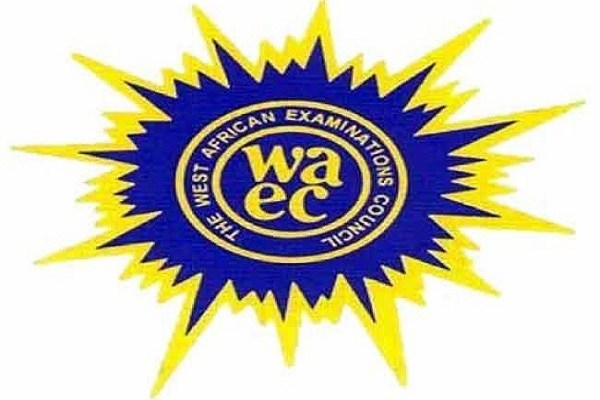Waec

Chemistry-Obj
1BCBDBACCCB
11CACBDCBAAB
21BBCBBCADAD
31BCADDAACAC
41BCBCDBCADA
(3ai)
I. Direct combination of constituent elements:
The direct combination reaction involves lead and chlorine gas.
Pb(s)+Cl₂(g) —> PbCl₂(s)
II. Double decomposition:
The double decomposition reaction can be achieved by reacting lead (II) nitrate with sodium chloride.
Pb(NO₃)₂(aq)+2NaCl(aq) —> PbCl₂(s)+2NaNO₃(aq)
III. Displacement reaction:
The displacement reaction can be achieved by reacting lead with hydrochloric acid.
Pb(s)+2HCl(aq) —> PbCl₂(s)+H₂(g)
(3aii)
I. Direct combination of constituent elements:
Increasing the temperature would increase the rate of reaction. Higher temperatures provide more kinetic energy to the reacting particles, increasing the chances of successful collisions.
II. Double decomposition:
Increasing the concentration of the reactants (lead (II) nitrate and sodium chloride) would increase the rate of reaction. Higher concentrations lead to more frequent collisions between reacting particles.
III. Displacement reaction:
Increasing the surface area of lead by using powdered lead instead of a solid block would increase the rate of reaction. A greater surface area allows more reactant particles to collide simultaneously.
(3bi)
-Increase Pressure: According to Le Chatelier’s Principle, increasing the pressure of the system will favor the formation of
SO₃ since there are fewer moles of gas on the product side (3 moles of reactants vs. 2 moles of products).
-Decrease Temperature: Since the reaction is exothermic (∆H is positive), decreasing the temperature will favor the forward reaction, thus increasing the yield of SO₃
(3bii)
First, determine the limiting reactant by comparing the mole ratio:
2SO₂+O₂–>2SO₃
From the balanced equation:
2 volumes of SO₂ react with 1 volume of O₂
Given:
SO₂= 60 cm³
O₂= 40 cm³
Required O₂=60cm³/2= 30cm³
Since 30cm³ of 02 is required but 40cm³ is available, SO₂ is the limiting reactant.
Volume of SO₃ formed: 60cm³SO₂ —> 60cm³SO₃.
Volume of residual O₂:
Initial O₂ – Reacted O₂ = 40cm³ – 30cm³
Total residual gas volume:
Residual O₂=10cm³
(3biii)
-Oxidation number of sulfur in SO₂: +4
-Oxidation number of sulfur in SO₃: +6
Change in oxidation number:
+6-(+4)= +2
(3c)
Diagram
Cyclopropane has the molecular formula C3H6 with a ring structure WHILE n-Propane has the molecular formula C3H8 with a linear structure.
(3di)
-Compound X: Propanol (or specifically, 1-propanol)
-Compound Y: Propyl butanoate
(3dii)
hydroxyl group (-OH)
(3diii)
CH₃H₇OH +CH₄H₈O₂ —> C₇H4O₂ +H₂O
(2a)
(I)Deliquescence is the process by which a substance absorbs moisture from the atmosphere until it dissolves in the absorbed water and forms a solution. This typically occurs with hygroscopic substances that have a high affinity for water.
(II)Efflorescence is the process by which a substance loses water to the atmosphere, resulting in the formation of a powdery surface deposit. This occurs when the vapor pressure of the water in the hydrated salt is greater than the partial pressure of water vapor in the air.
(2aii)
(I)Deliquescence: Calcium chloride (CaCl₂)
(II)Efflorescence: Sodium carbonate decahydrate (Na₂CO₃·10H₂O)
(2bi)
Ionization energy is the amount of energy required to remove an electron from an isolated gaseous atom or ion in its ground state. The first ionization energy refers to the energy needed to remove the first electron, while subsequent ionization energies refer to the removal of additional electrons.
(2bii)
The second ionization energy of sodium is greater than the first because, after the first electron is removed, the remaining electrons are closer to the nucleus and experience a stronger attractive force. Removing a second electron requires more energy as it disrupts the stable, noble gas configuration left behind.
(2ci)
Charles’ Law states that the volume of a given mass of gas is directly proportional to its absolute temperature, provided the pressure remains constant. Mathematically, it is expressed as:
V/T = k.
(2cii)
Draw a diagram
(2)

(4a&b)

(4c)

(5)



(1)



RECOMMENDED TOPICS
- JAMB 2025 UTME/DE registration document – step-by-step on how to apply for UTME and DE

- JAMB postpones 2025 UTME Registration to February 3rd

- JAMB Officially Announces 2025 UTME Registration, Exam, Mock Dates, Cost and Important Details

- The official reading novel for Jamb 2025 is Lekki Headmaster

- Subjects for Computer Science in JAMB for Guaranteed Success


